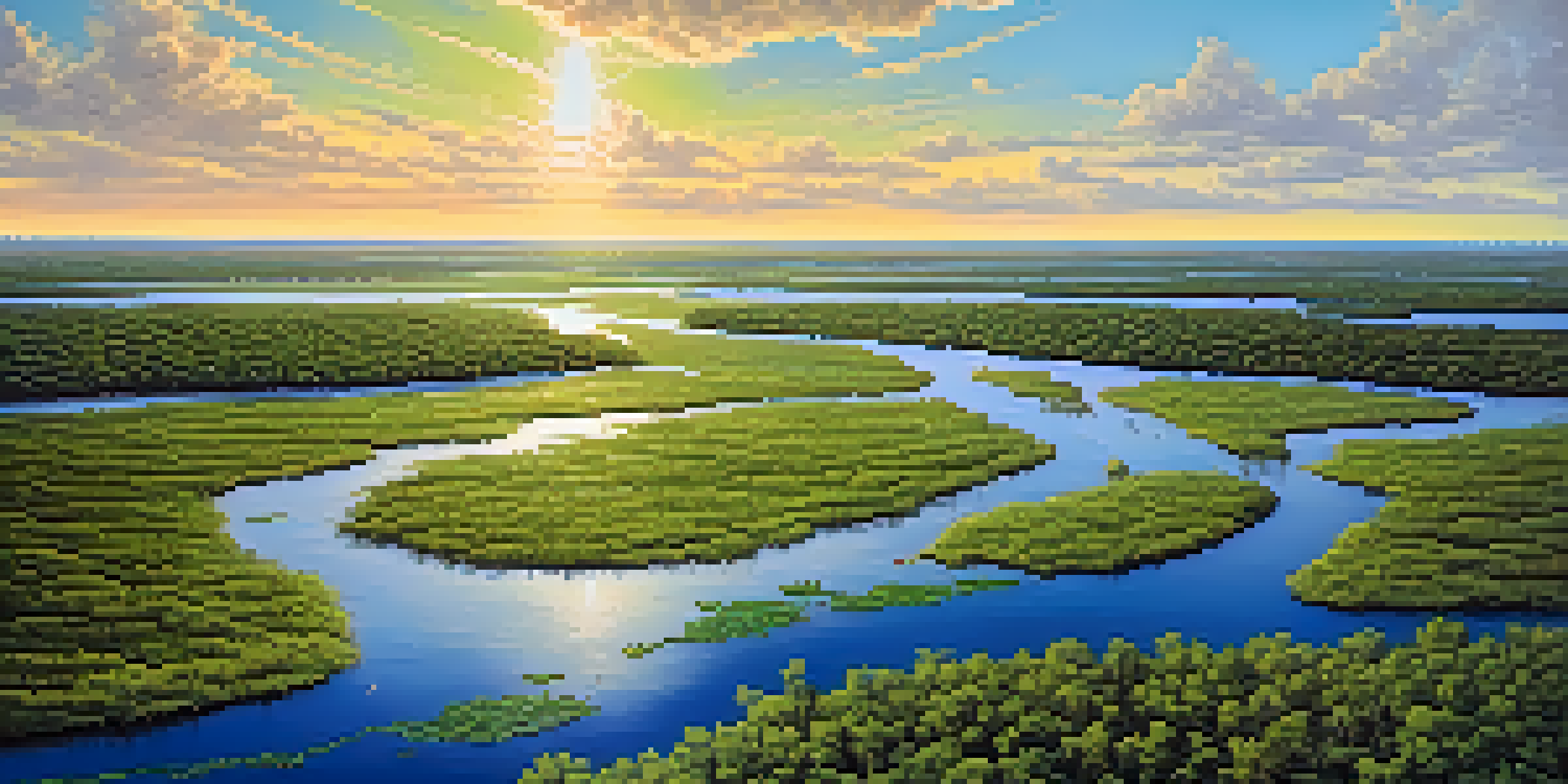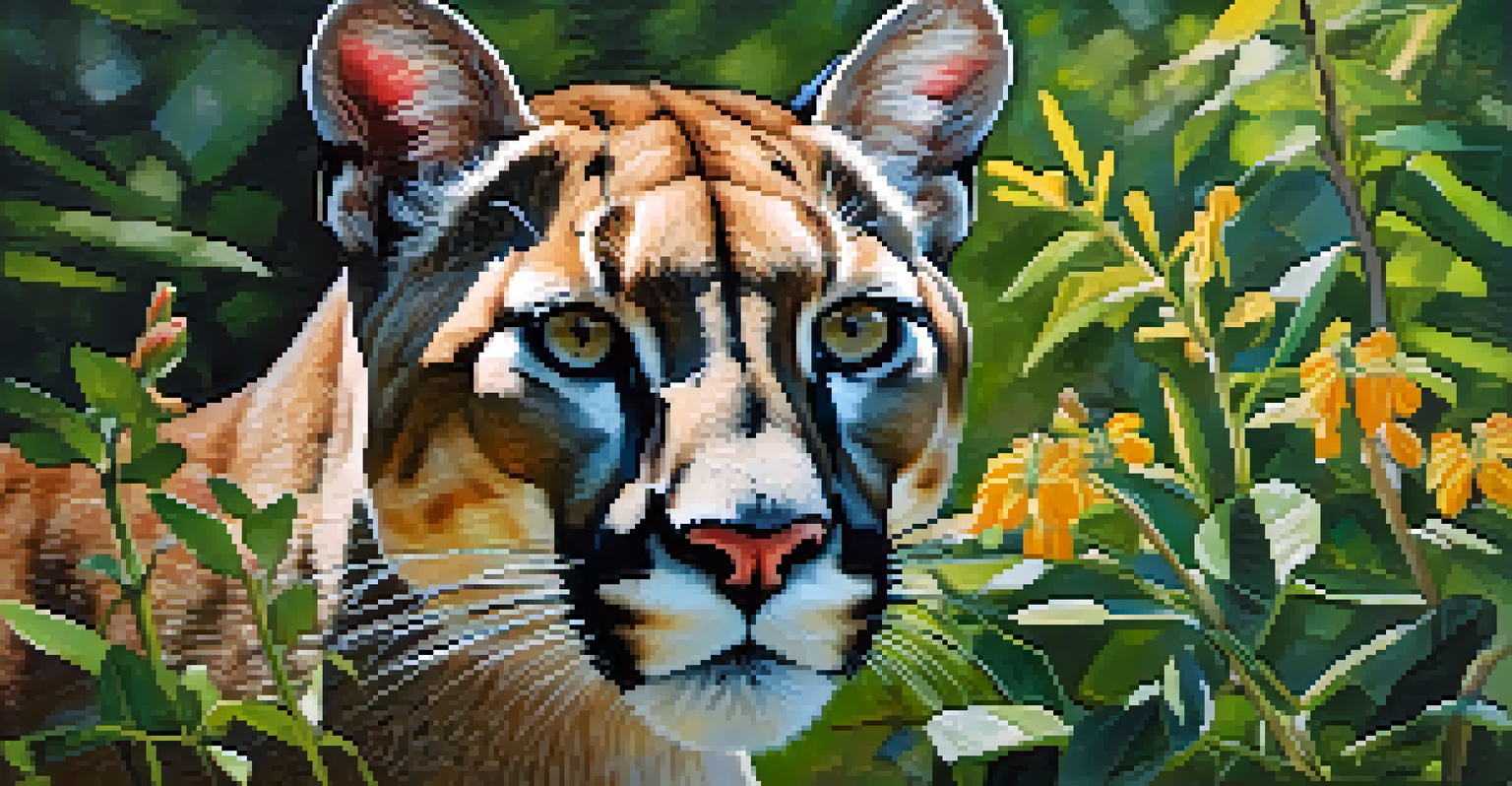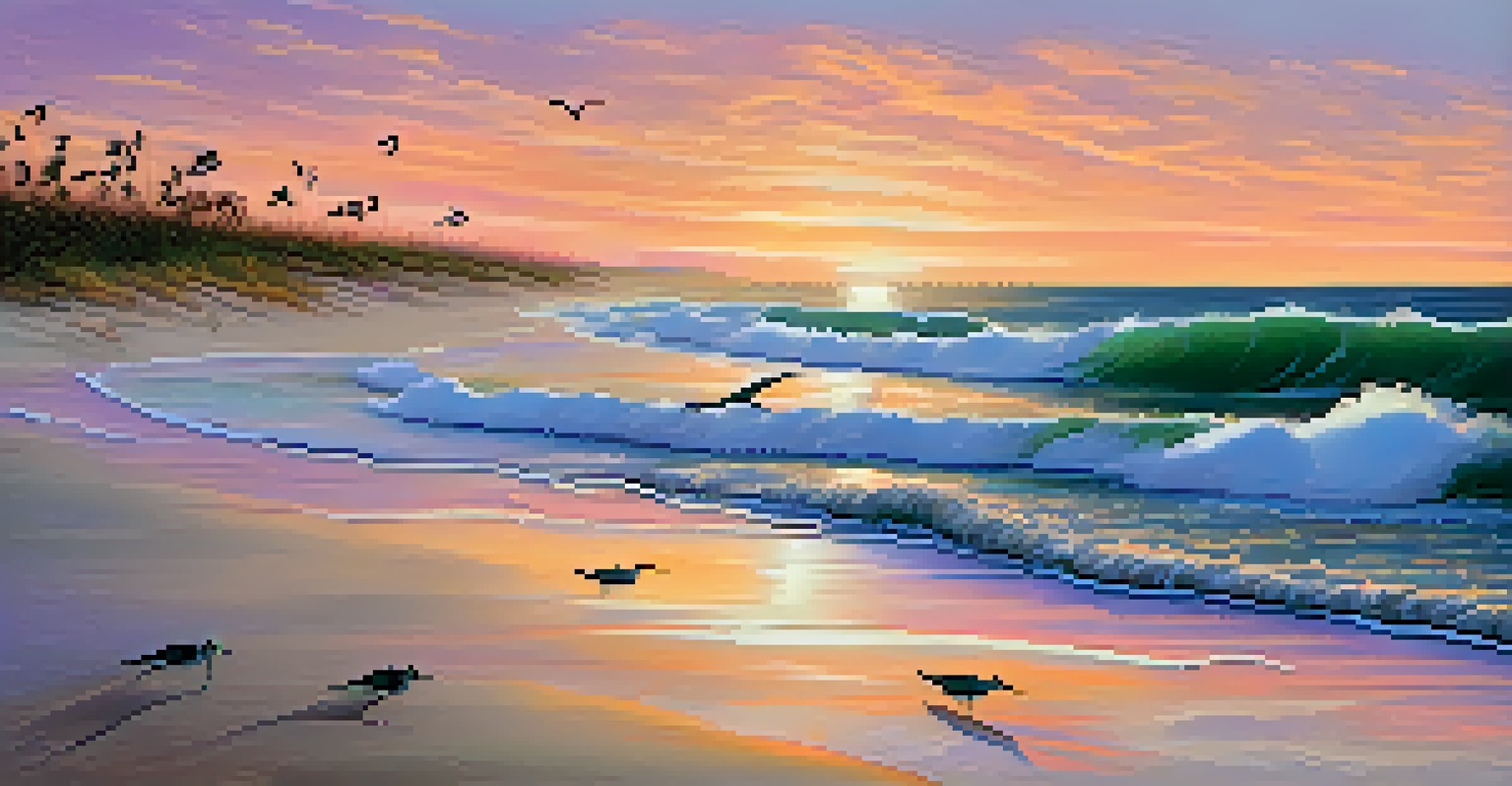Florida's Native Species: Protecting the State's Natural Heritage

Understanding Florida's Unique Ecosystems
Florida is home to a diverse range of ecosystems, from lush wetlands to sandy beaches. Each of these environments supports a variety of native species that play crucial roles in their ecosystems. For instance, the Everglades, often referred to as the 'River of Grass,' is a unique habitat that hosts both flora and fauna found nowhere else in the world.
The clearest way into the Universe is through a forest wilderness.
These ecosystems are not only vital for wildlife but also for human communities that rely on their resources. The intricate balance maintained within these natural systems highlights why protecting them is essential. When one species is affected, it can cause a ripple effect that impacts others, including humans.
By understanding the importance of these ecosystems, we can better appreciate the need for their preservation. It is through this appreciation that we can encourage more people to get involved in conservation efforts, ensuring that Florida's natural heritage remains intact for future generations.
Key Native Species of Florida
Florida boasts an impressive array of native species, including the Florida panther, manatee, and the American alligator. Each of these animals plays a significant role in their respective habitats, contributing to the overall health of the ecosystem. For example, Florida panthers help control the population of deer, which can otherwise overgraze vegetation.

In addition to mammals, Florida is also rich in bird species, such as the roseate spoonbill and the bald eagle. These birds not only add beauty to our skies but also serve as indicators of environmental health. Their presence often signifies a balanced ecosystem, while their absence can indicate underlying problems.
Florida's Diverse Ecosystems Matter
Florida's unique ecosystems, like the Everglades, are vital for both wildlife and human communities, highlighting the need for their protection.
Highlighting these species is crucial for conservation efforts, as it fosters a connection between people and wildlife. By learning about and celebrating these native species, we can inspire action to protect their habitats and ensure their survival.
Threats to Florida's Native Species
Despite Florida's natural beauty, its native species face numerous threats. Habitat loss due to urban development is one of the most significant challenges, as natural areas are often replaced with roads and buildings. This not only displaces wildlife but also fragments their habitats, making it difficult for species to thrive.
In every walk with nature one receives far more than he seeks.
Invasive species also pose a major threat, competing with native species for resources and altering the ecosystem. For instance, the Burmese python has become a notorious predator in the Everglades, significantly impacting populations of native mammals and birds. These invasive species can disrupt the delicate balance that has evolved over millennia.
Addressing these threats requires a concerted effort from individuals, communities, and government agencies. By raising awareness and supporting conservation initiatives, we can work together to mitigate these challenges and protect Florida's unique wildlife.
The Importance of Conservation Efforts
Conservation efforts are vital for safeguarding Florida's native species and their habitats. Organizations dedicated to wildlife preservation work tirelessly to restore ecosystems, protect endangered species, and educate the public about the importance of biodiversity. Their efforts help to ensure that future generations can experience the rich natural heritage of Florida.
One notable example is the Florida Fish and Wildlife Conservation Commission, which actively engages in research, habitat restoration, and public outreach. Their programs aim to balance human needs with wildlife conservation, showcasing the interconnectedness of our ecosystems. It's a reminder that both people and wildlife can coexist harmoniously.
Native Species Face Serious Threats
Habitat loss and invasive species pose significant challenges to Florida's native wildlife, requiring urgent conservation efforts.
Supporting these efforts, whether through volunteering, donations, or simply spreading awareness, can make a significant impact. Every action, no matter how small, contributes to the larger goal of preserving Florida's natural heritage.
Community Involvement in Conservation
Community involvement plays a crucial role in the success of conservation initiatives. Local residents often have valuable insights into the ecosystems they inhabit, making their participation essential. Engaging community members in conservation efforts fosters a sense of ownership and responsibility toward their natural surroundings.
Programs that encourage citizen science, such as bird watching or plant identification, allow individuals to contribute to data collection and monitoring efforts. This not only aids researchers but also enhances people's connection to nature. When communities are informed and engaged, they are more likely to advocate for the protection of local habitats.
By fostering a culture of environmental stewardship, we can create lasting change. Communities that unite for a common cause can amplify their voice and drive impactful conservation policies, ensuring a brighter future for Florida's native species.
Sustainable Practices for Everyday Life
Adopting sustainable practices in our daily lives can significantly contribute to the protection of Florida's native species. Simple actions, such as reducing plastic use or conserving water, can help minimize our ecological footprint. For instance, using reusable bags instead of plastic can prevent harmful waste from entering natural habitats.
Additionally, supporting local businesses and products that prioritize sustainability can help promote environmentally friendly practices. When we choose to buy from local farmers or artisans, we not only boost the economy but also reduce the carbon footprint associated with transporting goods over long distances. This shift can have a positive ripple effect on local ecosystems.
Community Action Fuels Conservation
Engaging local communities in conservation initiatives fosters a sense of responsibility and amplifies efforts to protect Florida's natural heritage.
Every small change adds up, and collectively, we can make a substantial difference. By incorporating sustainable practices into our routines, we contribute to a healthier environment for both wildlife and ourselves.
Future Directions for Florida's Conservation
Looking ahead, the future of Florida's native species hinges on our commitment to conservation. Innovative strategies, such as restoring natural habitats and creating wildlife corridors, are essential for promoting biodiversity. These corridors allow animals to safely move between habitats, reducing the risks associated with habitat fragmentation.
Moreover, continued research and monitoring are crucial for understanding the needs of various species. By investing in science and education, we can develop effective management plans that adapt to changing environmental conditions. Collaboration between scientists, policymakers, and communities will be key to navigating the challenges that lie ahead.

Ultimately, the future of Florida's natural heritage rests in our hands. By committing to proactive conservation efforts, we can ensure that the state's unique ecosystems and native species thrive for generations to come.